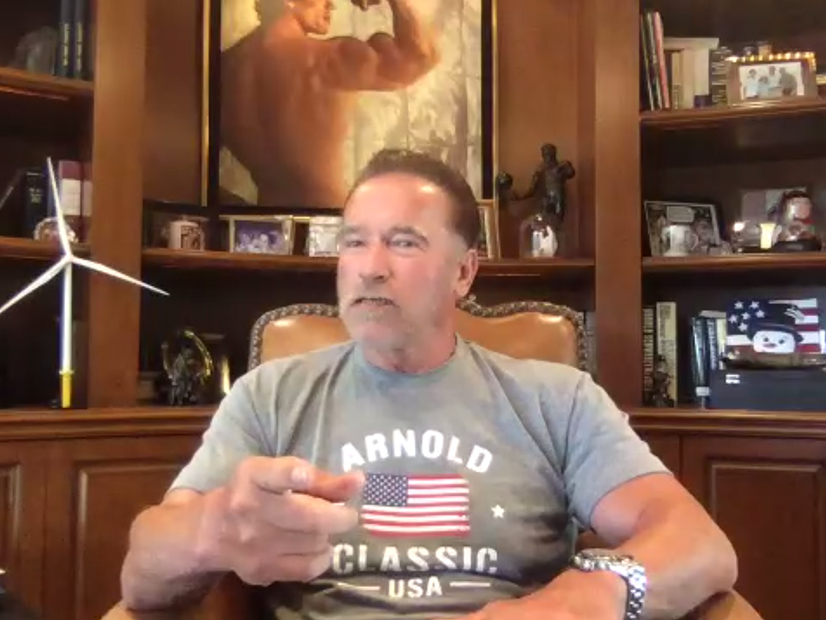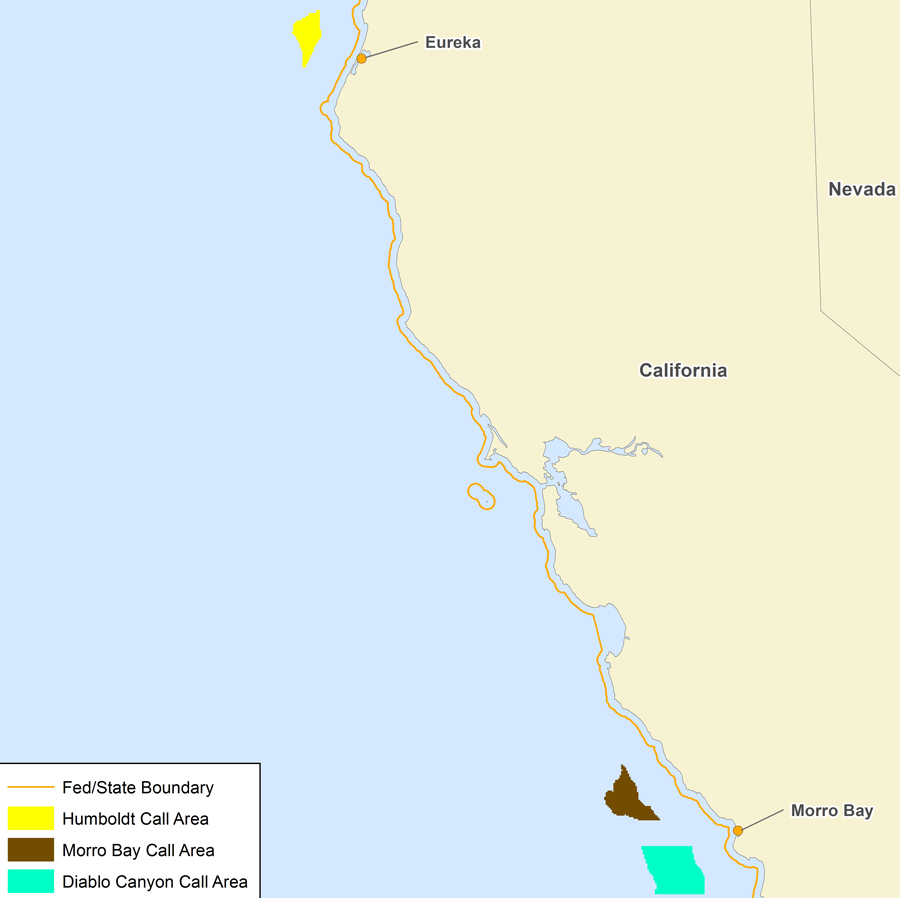
Former California Gov. Arnold Schwarzenegger took to Zoom on Wednesday to extoll the virtues of offshore wind, basing his arguments on new findings by researchers at his public policy think tank in Los Angeles.
“This wind energy that we’re talking about here will be another powerful weapon in our fight to terminate pollution once and for all,” Schwarzenegger said before turning over the virtual lectern to researchers from the Schwarzenegger Institute for State and Global Policy at the University of Southern California.
Those researchers, USC professors Adam Rose and Dan Wei, examined the state’s “core study scenario” of establishing 10 GW of offshore wind by 2040 to help meet the state’s 100% clean energy mandate.
In their study, they determined that installing 10 GW of floating turbines and building the infrastructure to support the effort would create up to 65,000 jobs during construction and 4,500 jobs in operation and maintenance for the lifetime of the floating wind farms.

Offshore wind turbines replacing fossil fuel generation would reduce CO2 emissions by 4.73 million metric tons by 2040 — equal to taking a million cars off the road — and result in $1 billion in savings and benefits annually, the researchers concluded.
“In effect, what we performed was a benefit-cost analysis of the inclusion of offshore wind in the energy mix for the next couple of decades,” Rose said. “This consists of direct benefits in terms of lowering electricity prices and several co-benefits.”
Many residents would consider the first two co-benefits, improved electricity reliability and reduction in greenhouse gases, “just as important as lowering electricity prices, and so we’ve made them the primary area … in our analysis,” he said.
Offshore wind could take at least a decade to become a reality in California, though the process has taken on new momentum as the state faces ongoing capacity problems.
In May, the Biden administration announced it would offer leases for California’s first offshore wind areas, a 399-square-mile block off Morro Bay in Central California that could support 3 GW of OSW and the Humboldt Call Area off the coast of Northern California, which could add an additional 1.6 GW. (See BOEM to Offer Leases for Calif. Offshore Wind.)
Each area would require major port upgrades and undersea transmission cables to connect the turbines to CAISO’s onshore grid, perhaps the biggest impediment to more rapid development. (Port System Big Challenge for Calif. Offshore Wind.)
Schwarzenegger as Cheerleader
The cigar-smoking, Humvee-driving, Republican former governor has defied stereotypes by championing environmental causes and working with liberal Democrats for decades. Among other actions during his administration, he promoted the “hydrogen highway” for fuel-cell vehicles and laid out a goal of creating 1 million solar rooftops across the state.
Schwarzenegger said he spent Wednesday morning pumping iron at Gold’s Gym in L.A. with U.S. Environmental Protection Agency Administrator Michael Regan, and he noted that former movie actor and California governor Ronald Reagan had signed the bill in 1967 that created the state Air Resources Board.
“And this was actually the year before I even moved to the United States, and since then, of course, it built with Jerry Brown and all the other governors, [including my administration]” Schwarzenegger said.
The former governor said California has become the world’s environmental leader because it established legislative requirements and stuck to them. Senate Bill 32 by his Democratic ally, former Sen. Fran Pavley, who emceed Wednesday’s Zoom session, required the state to reduce its greenhouse gas emissions by 40% below 1990 levels by 2030. SB 100, by Sen. Kevin de León, a fellow at the Schwarzenegger Institute, requires the state to supply retail customers with 100% clean energy by 2045.
Schwarzenegger compared the state’s clean energy agenda to his time as a body builder.
“This is no different than when I was in bodybuilding,” he said. “I could say at the age of 15, ‘I want to be the bodybuilding champion of the world,’ but I had to have a plan … [of] exactly how much weight to lift every day, how many reps I’d have to do, how many sets … what kind of exercises to do [and] what kind of a diet to have.
“There was a plan and that’s why, by the age of 20, I became the youngest world champion in bodybuilding ever,” Schwarzenegger said.
California needs to stick to a similar regimen of greenhouse gas reductions, he said.
‘Really Ramped Up’
Energy Commission Chair David Hochschild spoke at Wednesday’s event, praising Schwarzenegger for his environmental leadership.
“In our country, we have a surplus of carbon and a shortage of courage, particularly political courage to take on climate solutions,” Hochschild said. “You’ve shown incredible vision and passion and commitment.”
“I’m mindful of the fact that, when the million solar roofs goal was set some years ago during the Schwarzenegger administration, a lot of people dismissed it as mythology, and today we’re at 1.3 million solar roofs and we’re adding 400 solar roofs a day,” he said.
Tesla and other carmakers are producing 1,000 electric vehicles per day in California, and EVs have become a major state export, Hochschild said.
“It speaks to California’s role as an incubator of new technologies,” he said.
Offshore wind is further along on the East Coast and in Europe, but California has an opportunity to catch and surpass those early adopters, the CEC chair contended.
Assembly Bill 525, now under consideration in the state Senate, would require the CEC to develop a strategic plan for offshore wind by the end of 2022. (See Developer: 10 GW of Offshore Wind Insufficient for California.)
“We’ve got a long way to go, but once we turn our focus to this, I believe we can scale up and get a very sizable deployment of this technology off the West Coast,” he said. “That will help position it to grow even faster around the world and get that innovation engine really ramped up.”